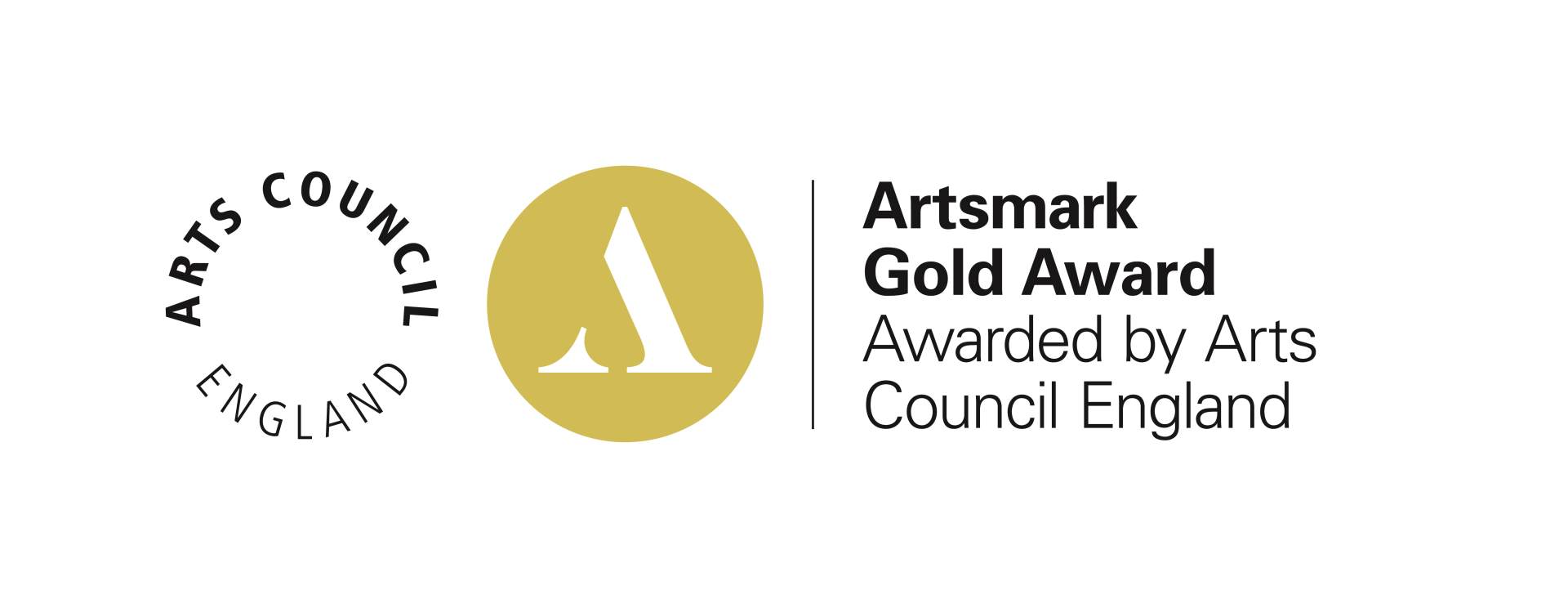Lichfield Cathedral: A Timeless Treasure of Gothic Architecture and History
The Treasure We Have in Lichfield Cathedral, Staffordshire
Lichfield Cathedral, or, more formally, the Cathedral Church of the Blessed Virgin Mary and St Chad, is not just a place of worship, but also a site of significant historical importance. Located at the heart of Lichfield in Staffordshire, this architectural marvel has stood the test of time. It serves not just as a spiritual refuge, but also as a symbol of resilience and flexibility, having evolved over centuries of upheaval. Hidden treasures reside within the walls of this sacred space, with layers of history to explore.
The History of Lichfield Cathedral
A church was first established on this site, perhaps around 659AD, making this one of the earliest centres of Christian worship in the UK. After he became Bishop of Mercia, St Chad came to Lichfield in 669, and founded a church community here that became the religious heart of the kingdom. Loved and revered, he died in 672, and Lichfield Cathedral was first consecrated around 700AD on his burial site. Since then, the site has remained consecrated, though cathedrals have been destroyed and rebuilt along the way. When the Normans invaded in the 11th century, they built a new cathedral, and a few traces of that building remain to this day. However, by about 1340, the cathedral had been rebuilt in the Gothic style. During the Civil War, Lichfield Cathedral was besieged three times, sustaining significant damage. When royalist forces recaptured Lichfield, a restoration effort began in the 1660s, with a focus on repairing the destruction inflicted by the war. At this point, Lichfield Cathedral became a symbol of renewal and resilience. During the Victorian Era, the cathedral was renovated under the direction of George Gilbert Scott, both to repair damages and to incorporate into the cathedral some ornate detailing and intricate craftsmanship, bringing Victorian grandeur to the architecture. While some statues were removed and some stone covered, there was a commitment in the work directed to preserving the historical significance of the cathedral.
The Cathedral’s Architectural Significance
The Lichfield Cathedral, despite Victorian renovations, maintains its distinctive Gothic style and design, characterised by its pointed arches, ribbed vaults, and windows with intricate tracery work. The exterior features a unique three-spired structure, with flying buttresses to support the stone walls and vaulted ceilings. Inside the cathedral, soaring arches and vaulted ceilings bring a sense of grandeur, and stained glass windows tell Bible stories in a beautifully decorative way. Of particular interest is the cathedral’s Rose Window, in the west end of the nave, depicting the life of Christ, and the Darwin Window, a tribute to the English physician, inventor and poet who was a founding member of the Lunar Society of Birmingham, a discussion group of pioneering industrialists and natural philosophers. The memorials, tombs, and monuments paying tribute to bishops, saints, and other historically notable figures give weight to the space, making it feel all the more sacred.
The Religious and Spiritual Role of the Cathedral in Lichfield
Lichfield Cathedral is the seat of the Bishop of Lichfield, and the principal church in the Diocese of Lichfield, which is the third largest in England. Mentioned in the Ecclesiastical History of the English People, by Venerable Bede, in 731, it has long been a spiritually significant site, revered by pilgrims, and continues to provide space for worship, community, and cultural events. The goals of the Lichfield Cathedral are to support the Diocese and reach out to the public, with a heart set on mission and making a greater contribution to the wellbeing of society. Services are held all week, with Morning Prayer on Monday through Saturday mornings, Eucharist every day and Evening Prayer/Evensong every evening.
Iconic Features and Highlights
No visit to Lichfield Cathedral is complete without taking the time to experience some of the most iconic features. The Decorated Gothic Lady Chapel offers a magnificent vista, as the highest architectural point of the church. The very fine, tall, windows were filled with 16th century medieval Herkenrode glass, considered to be one of Europe’s most exquisite artistic treasures, in 1803. They rise to the same height as the rest of the building, and the only thing that interferes with the perfect view is the fact that the nave and spire are slightly misaligned. The Great West Doors form the west front’s magnificent centrepiece, and weigh one and a half tonnes. The front is Victorian Gothic, with a mix of statues, some thought to be original. Some of the statues have windows behind them, which are thought to have been for choristers and perhaps trumpeters to perform for worshippers outside to hear on Palm Sunday. Inside the cathedral, in the choir loft, are stalls made of carved oak, in three sets of two rows, with misericords and the names of Prebends carved and gilded. The octagonal, two-story Chapter House was built in 1249, and after the Civil War, it was the only part of the building on which the roof remained intact. Today, it is one of the most beautiful parts of the Cathedral, housing a permanent exhibition of treasures, including the Lichfield Gospels, the Lichfield Angel, and parts of the Staffordshire Hoard.
Lichfield Gospels and Historical Artefacts
The Lichfield Gospels, also known as the St Chad Gospels, date back to the eighth century. This Gospel book contains 236 surviving folios, eight illuminated and four containing framed text. The manuscript includes, as marginalia, some of the earliest known examples of written Welsh, which makes it particularly historically significant. Damaged during its rebinding in 1707 and 1862, it was rebound in 1962 by Roger Powell. The cathedral is also home to an extraordinary collection of medieval wall art, structures, and stone sculptures, along with a hand-copied, fifteenth-century manuscript of Chaucer’s Canterbury Tales, and one of the three surviving original copies of Christopher Saxton’s maps of Tudor England. The cathedral library, located in the upper room of the Chapter House, at the top of a spiral staircase, holds many of these treasures, in a collection built up through generous loans and gifts. It is used by scholars and researchers, but hosts a limited number of public tours, as well as private visits, by appointment only.
Famous Figures Associated with Lichfield Cathedral
With such a long and storied history, it is to be expected that many famous figures have had connections to Lichfield. First among them, of course, was St Chad. One of four brothers who all became priests, St Chad became Bishop of Mercia in 669. At that time, he was given land by Wulfhere, the first Christian king of Mercia, to establish his see at Lichfield. Known for his humility and simplicity of life, he was at once venerated as a saint upon his death in 672, from the plague. His Shrine in the Cathedral of Lichfield became a place of pilgrimage throughout the Middle Ages, and there is a 16th-century statue of St Chad in the cathedral, with a 19th-century carved oak canopy. Samuel Johnson, Lichfield’s famous son, is also associated with the cathedral. His portrait is being displayed in Lichfield Cathedral’s Chapter House, alongside a selection of notable books. During the 18th century, the cathedral flourished as a centre of culture and learning, with an interesting balance between scientific advancement, religion, music, literature, and culture, thanks in part to Samuel Johnson, Elias Ashmole, Erasmus Darwin, and the Lunar Society. Aside from St Chad, many other luminaries have been laid to rest within Lichfield Cathedral or honoured with monuments and effigies. The first post-Conquest bishop to be buried in the cathedral was Bishop Geoffrey Muschamp, and Bishop Geoffrey Blythe was the last bishop to be buried in the cathedral until 1670, when Bishop John Hacket was buried on the south side of the high altar. Many of the later bishops and other luminaries buried in the cathedral or its graveyard are memorialised with wall tablets and other types of monuments. Poet Anna Seward, for instance, is buried under the choir stalls, and a plaque memorialising her, written by Sir Walter Scott, is by the entrance of the cathedral.
Role in Local and National Culture
Lichfield is known as a cathedral city and, indeed, the first known record of the town is in Bede’s history, where it was described as the place where St Chad established the see in 669. Because of the donation of land for a monastery, upon which the Cathedral was built, Lichfield became the ecclesiastical centre of Mercia. The city’s ecclesiastical importance is still central to its character, with industrial and commercial development in Lichfield having been limited. The cathedral has played a significant role in the cultural development of the city, and in the 18th century, it was considered a major centre of enlightenment in Europe, with music, literature, and culture thriving. Today, it serves as a venue for a wide variety of events, including festivals, concerts, awards ceremonies, performances, gala dinners, and educational forums. Samuel Johnson’s and Anna Seward’s connections to Lichfield Cathedral are part of its literary heritage, but Lichfield’s ties to literature are on full exhibit at the annual Lichfield Literature Festival, with the cathedral offering a backdrop to inspire as the written word is celebrated.
Restoration and Preservation Efforts
With the ample occasions of renovation, after the cathedral’s near destruction at various points in history, it is clear that this building stands as a symbol of renewal and rebirth. Just as clear is the need for preservation of a building as old as Lichfield Cathedral. Dedicated cathedral members and staff, along with heritage organisations and generous patrons, continue to engage in historical preservation efforts, and this proactive approach has yielded some significant discoveries. The Lichfield Angel, for example, was discovered under the nave of the cathedral in 2003. Part of a stone chest thought to have contained relics of St Chad, this panel is carved from Ancaster stone and contains pigments that closely correspond to those of the Lichfield Gospels. It was first unveiled to the public in 2006, and is currently on display in the cathedral.
The Cathedral’s Surroundings
Surrounding Lichfield Cathedral is the picturesque Close, with a historic set of buildings, scenic gardens, and a rich history. The buildings, some built during the medieval era, are associated with the cathedral and clergy. Many medieval buildings were altered in the 18th and 19th centuries, and the original structures are hidden by their newer fronts. During the medieval age, the Close was protected by a thick wall and a moat. Today, you can stroll through the gardens and enjoy the scenery. Other nearby points of interest include Stowe Pool, formerly a reservoir and now a recreational spot, which used to be frequented by Samuel Johnson. Visitors to Lichfield will want to spend some time there, as well as some of the other interesting sites. The home of Erasmus Darwin, Charles Darwin’s grandfather, is here, as well as Samuel Johnson’s birthplace. Not far away is the National Memorial Arboretum, a year-round centre of Remembrance, centrally located in the National Forest in Staffordshire, and it features more than 400 memorials to Military and Civilian associations as well as individuals.
Music and Choir Traditions
There is a traceable Choral Foundation that stretches from 1315 to the current Cathedral Choir. This formal provision of Lay Vicars has expanded over the years to now include the posts of Director of Music, Choral Scholars, Headteacher of the Cathedral School and Choristers, as well as the singing outreach programme, MusicShare™. This award-winning programme has been bringing the joy of singing to school children across the West Midlands for over 20 years. When the Cathedral Choir goes on holiday, the cathedral welcomes visiting choirs to provide the music, and these choirs come not only from the Diocese and all over the country, but also from abroad. This ensures that there is never a gap, throughout the year, in sung services. A wide variety of musical performances are held at the cathedral each year, with both local and national performers appearing here, including the ‘Concerts by Candlelight’ series, highlighting different modern artists. Another element of the musical tradition at Lichfield Cathedral is the magnificent organ, which dates back to 1861. It has undergone several rebuilds, and currently has 80 speaking stops and an astonishing 5,038 pipes. Played by some of the world’s most celebrated musicians, the organ is regularly used in recitals and concerts, where visitors can appreciate the range and versatility of this amazing instrument.
Community Engagement and Social Impact
Lichfield Cathedral takes very seriously its role as the heart of the community and diocese, seeking to tackle important issues. To that end, the cathedral provides space for healthy debate, hosting events like talks by leading thinkers around political issues and other noteworthy topics. Another goal is to be good stewards of the earth, and Lichfield Cathedral has adopted an ethical, sustainable framework for their policies and practices, as an Eco Church, dividing activity between worship and teaching, buildings, land, community and global engagement, and lifestyle. The cathedral has entered into a partnership with The Guild of Health and St Raphael to become a Healthy Healing Hub, supporting health and wellbeing in the local community. Lichfield Cathedral strives to be a place of action, making changes towards a better future, and providing a voice for vulnerable and marginalised people. In addition to the music outreach to local schools, Lichfield offers a Wellness for Families programme, encouraging primary school children to think about mental health in an age appropriate way, through fun and creative interactions. The cathedral also helps unemployed young people find job placements within the region, and is a dementia-friendly space. During the COVID-19 pandemic, Lichfield played a crucial role in protecting the health of the region, housing the UK vaccination programme in January of 2021.
Seasonal Celebrations and Events
Holy Week is eventful at Lichfield Cathedral, beginning with a Palm Sunday Procession through the city, led by a donkey, with participants singing and waving palm crosses. Services are held throughout the week, with celebratory services on Easter Sunday and Monday. During the Christmas season, Lichfield Cathedral activities form the centre of many families’ Christmas celebrations. With services throughout Advent and Christmas, the cathedral also hosts a Christmas market, a Christmas tree festival, and an extremely popular Christmas-themed light show. There are many other events and celebrations at the cathedral throughout the year, including the Lichfield Greenhill Bower during Spring Bank Holiday, originating from a 12th century celebration, and the Lichfield Festival, an international arts festival in July. On summer weekends, festivals at the cathedral include the Lichfield Folk Festival, and the Lichfield Real Ale Jazz, and Blues Festival.
Legends and Mysteries of Lichfield Cathedral
There are many strange myths surrounding Lichfield Cathedral, including an origin story that involves a massacre of Christians at Lichfield that led the king of Mercia to establish a monastery there. It is also falsely claimed that the cathedral is in the shape of a cross and the three spires represent the Trinity. There are ghost stories too, of course, in a place as old as Lichfield, and many ghost tours are available in the town. Underground tunnels in Lichfield have interesting stories, like the one built so a business owner could get back and forth without encountering others during the plague, and the one that carried people in an escape route out of the cathedral during the Civil War. Interestingly, the Staffordshire Hoard was discovered in 2009 near Lichfield, and it is the largest hoard of Anglo Saxon that has ever been found.
What Sets Lichfield Apart from Other Cathedrals
Lichfield Cathedral is one of only three cathedrals in the country with three spires, along with St Mary’s Cathedral in Edinburgh and Truro Cathedral in Cornwall. What makes Lichfield Cathedral unique is that it is the only medieval cathedral with three spires. The spires, known as the “three ladies of the vale”, can be seen for many miles and are the city skyline’s focal point. Lichfield is also the only cathedral that was a fortress with a moat. Lichfield Cathedral has been designated a Grade 1 listed building, a designation only assigned to 2.5 percent of listed buildings.
How to Visit Lichfield Cathedral: Tickets and Practical Information
Visitors are welcome to Lichfield Cathedral’s worship services throughout the week. For those wishing to see the Cathedral as tourists, there are 45 minute highlight tours held daily, Monday through Saturday, at 11:00 and 14:00. Tower tours and library tours are also available, as are private group tours. Check the website for details on these happenings and special events, as well as travel and transportation tips. Well-behaved dogs are welcome in the cathedral and on the grounds, on a lead, and can even attend Sunday evensong with their owners, in the Nave only.
Lichfield Cathedral’s Legacy Endures and Shines Through Lichfield Cathedral School
As a cathedral, Lichfield is a stunningly beautiful place and a must-visit historical site, but it is also much more than that. The Cathedral remains a vibrant part of the community, with outreach to all generations. Lichfield Cathedral School is a part of Lichfield Cathedral’s enduring legacy and plays a significant role in its community impact. The Cathedral has always made provision for education, first for the boy choristers, then for boys, and now for all children. We are committed to instilling a strong ethical foundation in an inclusive community founded on Christian ideals of faith, learning, leadership, and service. Because our school was built on the Anglican foundation established by the Cathedral, Christian values are an important part of daily life; however, children of any denomination are welcome. To learn more about our vision or to discuss enrolling your child at Lichfield Cathedral School, contact us through our website.














